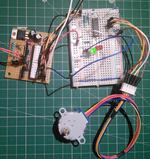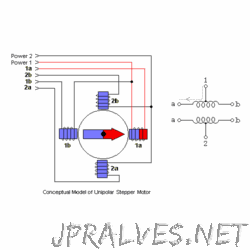Other

Two circuits will be built today to control Unipolar motors. A unipolar motor is a type of step motor described as needing only a current source. By contrast, bipolar motors require two current sources to move. The complexity of this …

A unipolar motor (also called homopolar motor) is a direct current (DC) motor typically with slip-rings on each end of a cylindrical rotor and field magnets or a DC field winding generating a magnetic field on the stator. The rotor has typically not a winding but just straight connections in axial direction between the slip-rings (e.g. a copper tube encasing the rotor or rods embedded in the rotor). The field is uniformly perpendicular to the cylindrical rotor surface and does not change polarity over the 360-degree perimeter of the cylindrical part of the rotor. That means if the field is considered entering the rotor between the slip-rings it must leave the rotor though the rotor's end surfaces. It is not important that the magnetic field is generated from the stator; a similar field may be generated from the rotor with the same effect (the magnetic fields would not rotate with the rotor).

Two circuits will be built today to control Unipolar motors. A unipolar motor is a type of step motor described as needing only a current source. By contrast, bipolar motors require two current sources to move. The complexity of this …